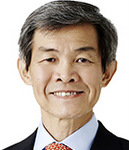Dear Investor,
|
|
Company and Portfolio Updates
 Daniel Chan, founder of DCG Capital.During the fourth quarter, we added 14 new positions to the portfolio: 10 China/Hong Kong names, one Indonesia, one Korea, one Malaysia and one Vietnam, and got rid of eight names. We took advantage of the Shanghai-Hong Kong Stock Connect, which opened in mid-November, and bought two Chinese stocks listed on the Shanghai Stock Exchange.
Daniel Chan, founder of DCG Capital.During the fourth quarter, we added 14 new positions to the portfolio: 10 China/Hong Kong names, one Indonesia, one Korea, one Malaysia and one Vietnam, and got rid of eight names. We took advantage of the Shanghai-Hong Kong Stock Connect, which opened in mid-November, and bought two Chinese stocks listed on the Shanghai Stock Exchange. One of these is SAIC Motor Corporation (“SAIC”), the largest auto-manufacturing group in China with a 24% national market share. If you have been in the back seat of a cramped Shanghai taxi sometime in the past 30 years, it would very likely have been one of SAIC Motor’s ubiquitous Volkswagen (“VW”) Santana taxis. SAIC is 77% Shanghai government owned-controlled and its primary products are cars, minibuses and light trucks. The bulk of SAIC’s value lies in its 50/50 joint ventures with VW and General Motors (“GM”). Shanghai VW and Shanghai GM each sell about 1.7 to 1.8 million vehicles annually, accounting for roughly 60% of total SAIC vehicle production and 90% of SAIC’s net income.
With increasing focus on pollution control, intractable traffic jams and government restriction on car ownership, we don’t expect any Chinese automaker to return to the 20% to 50% kind of annual growth rates seen in the past decade. Nonetheless a mid to high single-digit percentage volume growth over the next five years appears comfortably within reach as existing car owners look to upgrade to SUVs (Sports Utility Vehicles) or MPVs (Multi-purpose vehicles) while Chinese economic growth inland spreads the joy of new car ownership from the coastal cities. We think SAIC can do better than this.
Strong contribution from the joint venture with GM (Chevy, Buick and Cadillac) and a new slate of 2015 VW models suggests SAIC will continue to beat market growth and extend its leading market share in the foreseeable future. We also expect SAIC to benefit from the long running competition between VW and GM in the China market. In 2013, VW retook its spot as China’s top selling foreign brand after GM’s long nine year reign at the top. VW’s newly announced EUR22 billion investment in its two Chinese joint ventures over the next five years will help expand SAIC’s exposure inland. GM, on its part, is already a third of a way into its USD12 billion 2014 to 2017 expansion plan to China’s West.
Based on surveys we have seen, foreign JV brands, and in particular, VW, continues to be aspirational for Chinese consumers and tends to invoke the highest brand loyalty. SAIC’s current valuation is attractive, with a third of its RMB220 billion market cap in cash, price-to-book (“PB”) ratio of 1.4x, PE ratio of 7.7x , and a dividend yield 6.5%.





